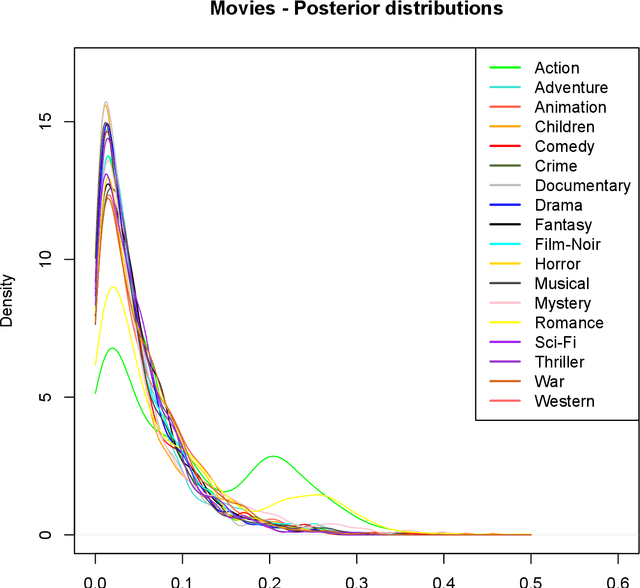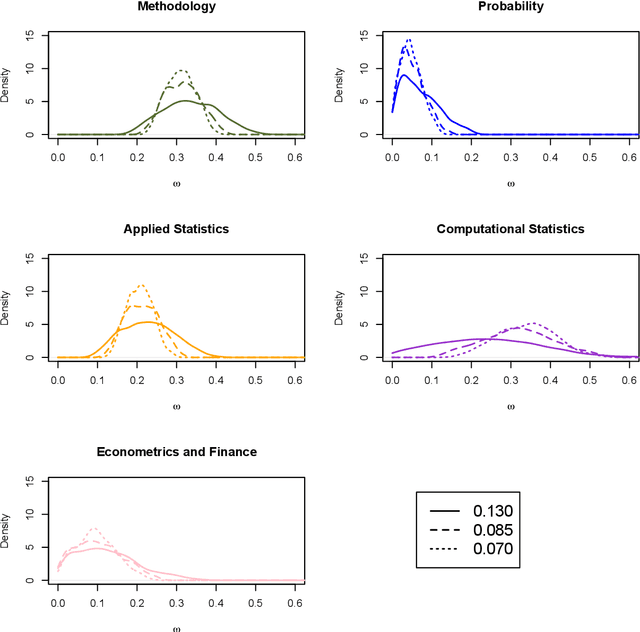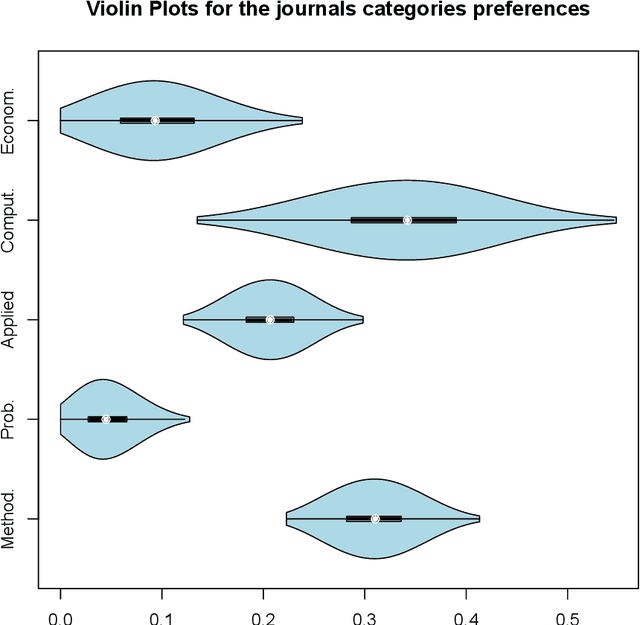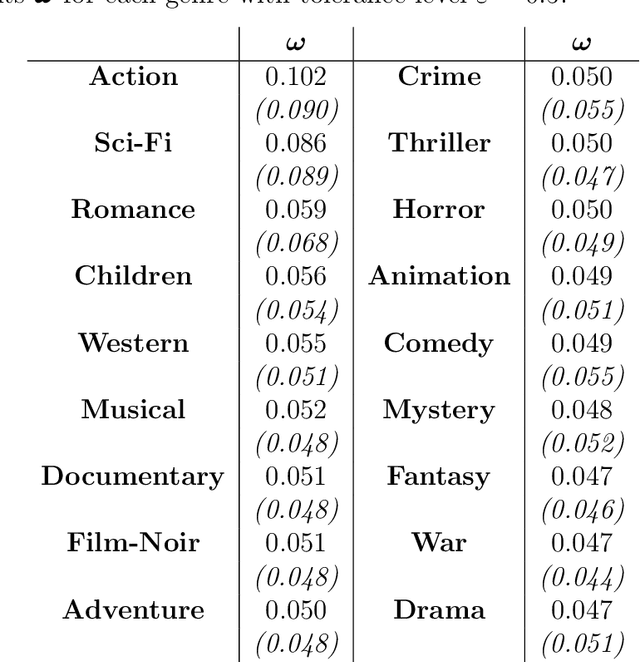Clara Grazian
SciQAG: A Framework for Auto-Generated Scientific Question Answering Dataset with Fine-grained Evaluation
May 16, 2024Abstract:The use of question-answer (QA) pairs for training and evaluating large language models (LLMs) has attracted considerable attention. Yet few available QA datasets are based on knowledge from the scientific literature. Here we bridge this gap by presenting Automatic Generation of Scientific Question Answers (SciQAG), a framework for automatic generation and evaluation of scientific QA pairs sourced from published scientific literature. We fine-tune an open-source LLM to generate \num{960000} scientific QA pairs from full-text scientific papers and propose a five-dimensional metric to evaluate the quality of the generated QA pairs. We show via LLM-based evaluation that the generated QA pairs consistently achieve an average score of 2.5 out of 3 across five dimensions, indicating that our framework can distill key knowledge from papers into high-quality QA pairs at scale. We make the dataset, models, and evaluation codes publicly available.
DARWIN Series: Domain Specific Large Language Models for Natural Science
Aug 25, 2023Abstract:Emerging tools bring forth fresh approaches to work, and the field of natural science is no different. In natural science, traditional manual, serial, and labour-intensive work is being augmented by automated, parallel, and iterative processes driven by artificial intelligence-based experimental automation and more. To add new capabilities in natural science, enabling the acceleration and enrichment of automation of the discovery process, we present DARWIN, a series of tailored LLMs for natural science, mainly in physics, chemistry, and material science. This series relies on open-source LLM, incorporating structured and unstructured scientific knowledge from public datasets and literature. We fine-tuned the models using over 60,000 instruction data points, emphasizing factual correctness. During the fine-tuning, we introduce the Scientific Instruction Generation (SIG) model, automating instruction generation from scientific texts. This eliminates the need for manual extraction or domain-specific knowledge graphs and efficiently injects scientific knowledge into the model. We also explore multi-task training strategies, revealing interconnections between scientific tasks. DARWIN series not only achieves state-of-the-art results on various scientific tasks but also diminishes reliance on closed-source AI models. Our research showcases the ability of LLM in the scientific domain, with the overarching goal of fostering prosperity within the broader AI for science community.
Large Language Models as Master Key: Unlocking the Secrets of Materials Science with GPT
Apr 12, 2023Abstract:The amount of data has growing significance in exploring cutting-edge materials and a number of datasets have been generated either by hand or automated approaches. However, the materials science field struggles to effectively utilize the abundance of data, especially in applied disciplines where materials are evaluated based on device performance rather than their properties. This article presents a new natural language processing (NLP) task called structured information inference (SII) to address the complexities of information extraction at the device level in materials science. We accomplished this task by tuning GPT-3 on an existing perovskite solar cell FAIR (Findable, Accessible, Interoperable, Reusable) dataset with 91.8% F1-score and extended the dataset with data published since its release. The produced data is formatted and normalized, enabling its direct utilization as input in subsequent data analysis. This feature empowers materials scientists to develop models by selecting high-quality review articles within their domain. Additionally, we designed experiments to predict the electrical performance of solar cells and design materials or devices with targeted parameters using large language models (LLMs). Our results demonstrate comparable performance to traditional machine learning methods without feature selection, highlighting the potential of LLMs to acquire scientific knowledge and design new materials akin to materials scientists.
Interdisciplinary Discovery of Nanomaterials Based on Convolutional Neural Networks
Dec 06, 2022Abstract:The material science literature contains up-to-date and comprehensive scientific knowledge of materials. However, their content is unstructured and diverse, resulting in a significant gap in providing sufficient information for material design and synthesis. To this end, we used natural language processing (NLP) and computer vision (CV) techniques based on convolutional neural networks (CNN) to discover valuable experimental-based information about nanomaterials and synthesis methods in energy-material-related publications. Our first system, TextMaster, extracts opinions from texts and classifies them into challenges and opportunities, achieving 94% and 92% accuracy, respectively. Our second system, GraphMaster, realizes data extraction of tables and figures from publications with 98.3\% classification accuracy and 4.3% data extraction mean square error. Our results show that these systems could assess the suitability of materials for a certain application by evaluation of synthesis insights and case analysis with detailed references. This work offers a fresh perspective on mining knowledge from scientific literature, providing a wide swatch to accelerate nanomaterial research through CNN.
Modelling Preference Data with the Wallenius Distribution
Jun 28, 2018



Abstract:The Wallenius distribution is a generalisation of the Hypergeometric distribution where weights are assigned to balls of different colours. This naturally defines a model for ranking categories which can be used for classification purposes. Since, in general, the resulting likelihood is not analytically available, we adopt an approximate Bayesian computational (ABC) approach for estimating the importance of the categories. We illustrate the performance of the estimation procedure on simulated datasets. Finally, we use the new model for analysing two datasets about movies ratings and Italian academic statisticians' journal preferences. The latter is a novel dataset collected by the authors.
 Add to Chrome
Add to Chrome Add to Firefox
Add to Firefox Add to Edge
Add to Edge